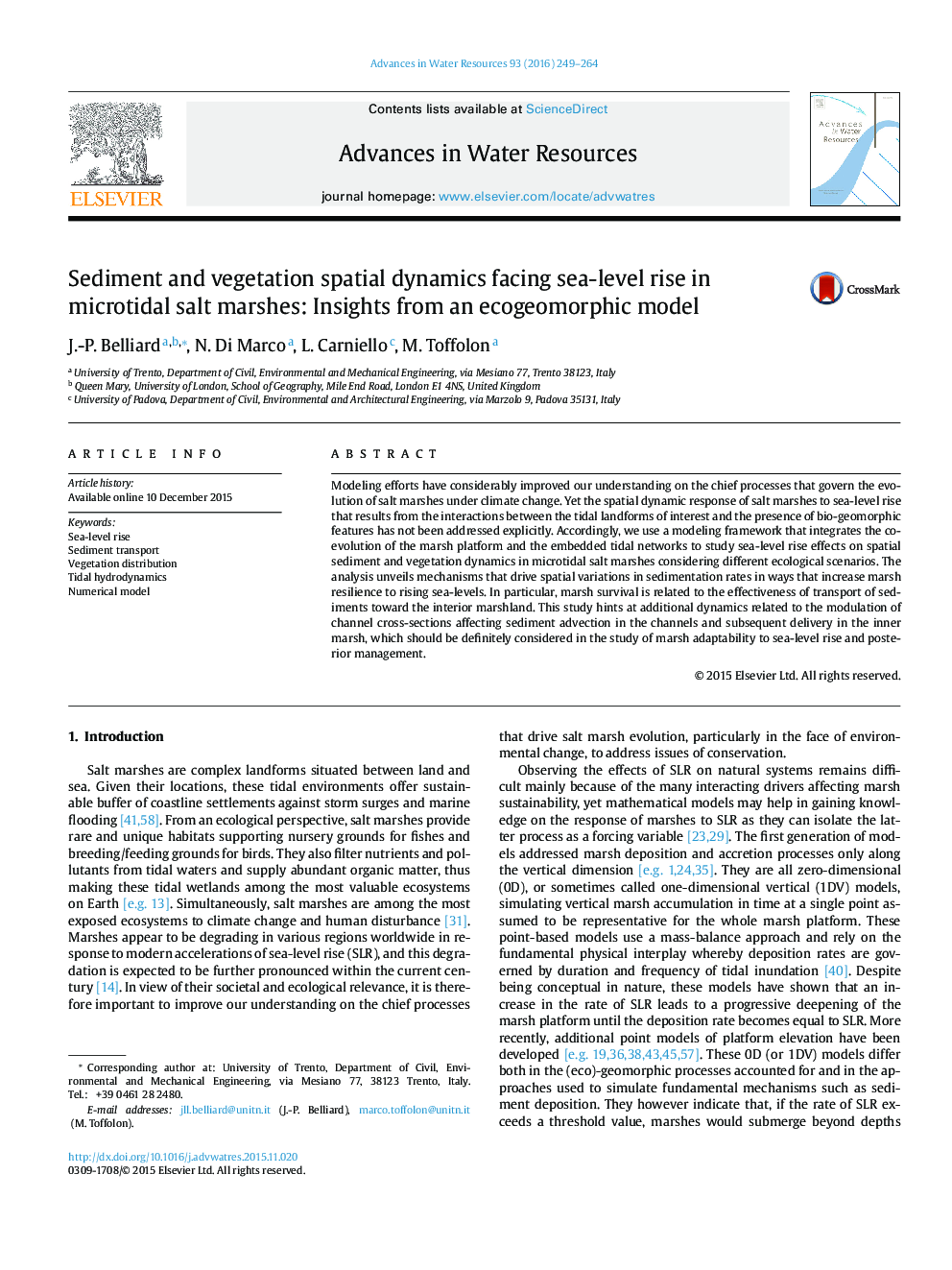| Article ID | Journal | Published Year | Pages | File Type |
|---|---|---|---|---|
| 4525235 | Advances in Water Resources | 2016 | 16 Pages |
•Marsh survival is linked to the effectiveness of transport of sediments to the interior marshland.•Seaward-landward sediment exchanges decrease with increasing rates of sea-level rise.•Vegetation modulates channel cross-sections that enhance sediment delivery in the inner marsh.•Marshes develop a steeper topographic profile with increasing rates of sea-level rise.
Modeling efforts have considerably improved our understanding on the chief processes that govern the evolution of salt marshes under climate change. Yet the spatial dynamic response of salt marshes to sea-level rise that results from the interactions between the tidal landforms of interest and the presence of bio-geomorphic features has not been addressed explicitly. Accordingly, we use a modeling framework that integrates the co-evolution of the marsh platform and the embedded tidal networks to study sea-level rise effects on spatial sediment and vegetation dynamics in microtidal salt marshes considering different ecological scenarios. The analysis unveils mechanisms that drive spatial variations in sedimentation rates in ways that increase marsh resilience to rising sea-levels. In particular, marsh survival is related to the effectiveness of transport of sediments toward the interior marshland. This study hints at additional dynamics related to the modulation of channel cross-sections affecting sediment advection in the channels and subsequent delivery in the inner marsh, which should be definitely considered in the study of marsh adaptability to sea-level rise and posterior management.
